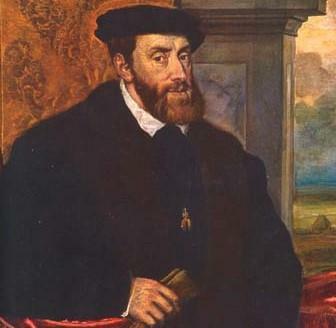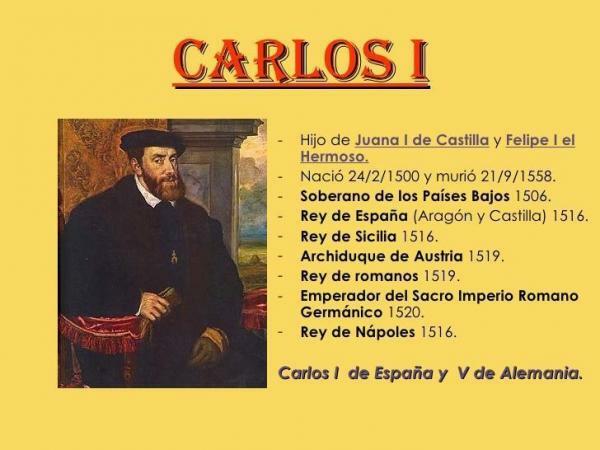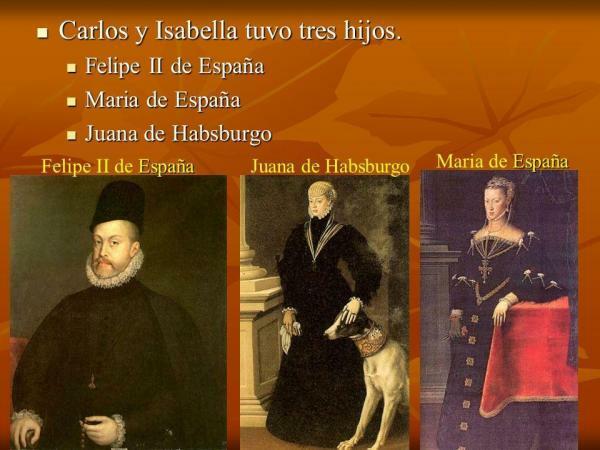Carlos I of Spain

The Spanish Empire began its journey during the reign of the Catholic Monarchs, who were concerned with making a series of marriage agreements so that their children would come out very reinforced. As a result of one of these marriages, the person who would end up forming the modern empire par excellence would be born: Carlos I. In this lesson from a TEACHER we bring you the short biography of Carlos I of Spain, the most powerful man in the Christian world. It will be during his reign when America is conquered and with it the famous Spanish Empire will be created, He also intervened in countless problems in Europe trying to hold the territories together in a single faith.
Index
- Early life of Carlos I
- King of Spain and Holy Roman Emperor
- Return to Spain of Carlos I
- The emperor's family
- The last days of Carlos I of Spain
Early life of Carlos I.
We begin the short biography of Carlos I of Spain talking about his birth. The young prince Charles of Habsburg
He was born in Ghent (Flanders) on February 24, 1500, his mother being Juana I of Castile and his father Felipe the beautiful. During the course of the celebration of a great dance. He was baptized on March 7 in the Cathedral of San Bravón, without the presence of Castilian authorities.Shortly before he was one year old, he was already Duke of Luxembourg and knight of the Burgundian Order of the Golden Fleece. His education started from an early age, learning the history of the lands from her father, although from Castile Luis Cabeza de Vaca was sent so that the young prince could learn Spanish, since Fernando el Católico was aware that, at some point, he could reach the throne of Castile and Aragon (we know that when he arrived in Spain, he still did not master the language for full).
In 1506 her parents marched for the second time to Castile to be sworn in as monarchs after the death of Isabel I of Castile, although her government lasted a very short time since Felipe the beautiful died that same year. After that, Juana was locked up by her father in the convent of Tordesillas (from which she would never leave).
A) Yes, Carlos was left in the custody of his grandfather, Emperor Maximilian I of Habsburg, assuming the regency of the Netherlands. His education continued in Flanders, being surrounded by the Lord of Chiévres and Hadrian of Utecht as members of his court.

Image: Slideshare
King of Spain and Holy Roman Emperor.
On March 21, 1516, after long deliberations, Carlos agreed to be called King of the Two Crowns, beginning his trip to the Iberian Peninsula to be sworn by the Cortes. He arrived on September 19, 1517 to the coasts near the town of Villaviciosa, where he would reside for a time; after that, on November 4, he arrived in Tordesillas where he visited her mother and where he obtained her recognition from her to be named monarch of Castile and Aragon.
From there, he went to Valladolid, where on February 9, 1518, he was sworn by the Courts in exchange for:
- Learn to speak Spanish
- That it cease in the appointments of foreigners
- The ban on the exit of precious metals and horses from Castile
- And that he treat his mother in the most respectful way, because she was still the queen
From that moment on, the monarch would dedicate himself to visiting the parts of his kingdoms to know them first hand, doing the same in Aragon, where he was also sworn king. But an unexpected element made the monarch have to leave the peninsular territory and that was that on January 12, 1519, Maximilian I died, becoming king of Romans, therefore, he had to go to Germany leaving the real necessities for later.
This was a very hard blow for the Valencian subjects, who were waiting for him to agree on a series of requirements. It was for this reason that I would begin the rebellion of the commoners (1520-1522), since they did not want a monarch who left his obligations and who only wanted the money for his affairs in Europe. This was closely followed in Aragon where the Germanías would appear between 1519-1523 and finally to end the rebellions that occurred at that time, we will find the uprising of Navarre in 1521 to re-establish itself as a kingdom Independent.
Return to Spain of Carlos I.
In 1522 Charles I returned to Spain and he understood in a fulminating way that the peninsular territories were the most important of the inherited lands but that he should know how to take them so that they would not rise up in arms against he; in this way, and after putting down the rebellions, there was a change of mentality in the monarch.
Throughout his reign he maintained a division between the existing kingdoms, giving them privileges, although they had to pay the taxes due to the monarch. Similarly, it was during his reign that the American territory was conquered, granting the first encomiendas and drafting the first regulations on the new territories and subjects of the Crown.
At the international level, we can say that there were two main enemies: on the one hand, France, the enemy par excellence of Spain and the territories of Burgundy and on the other side, the infidel, that is, the Ottoman Empire, with which it maintained constant confrontations in the Mediterranean.
Within the biography of Carlos I of Spain, we must mention the Protestantism problem that put the Holy Empire in a dead end, since the teachings of Luther, added to the ambition of the nobles and German princes to gain more power against the emperor, led Christendom to schism, and with it to a war between Christians.
The emperor's family.
Continuing with the short biography of Carlos I of Spain, we know that on March 11, 1526 he contracted marriage to Isabel of Portugal in Seville, following the policy initiated by the Catholic Monarchs in the effort to unify the Iberian Peninsula.
From this marriage would come:
- Philip (May 21, 1527): which, would be the famous Philip II
- Mary on June 21, 1528, that she would end up being the wife of his cousin Maximilian II of Habsburg.
- Juana on June 24, 1535, who would marry her cousin, Juan Manuel de Portugal
- In addition, he would have three more children, all of whom did not survive. But, on the other hand, she had children from extramarital affairs, the most important being:
- Margaret of Austria (December 28, 1522)
- Juan from Austria February 24, 1547

Image: Slideshare
The last days of Carlos I of Spain.
To conclude with the short biography of Carlos I of Spain we will see how in 1555 he abdicated the empire handing it over to his brother, his Fernando, and in 1556 he abdicated the peninsular possessions in his son Felipe, who would also obtain the Italian territories, in addition to Flanders.
In this way, he went to the monastery of Yuste (Extremadura) to try to cure himself of the gout that he suffered; During his stay, a mosquito bite caused him to become ill with malaria, something that, together with his serious illness, on September 21, 1558 he passed away.
If you want to read more articles similar to Carlos I of Spain - Short Biography, we recommend that you enter our category of Story.



